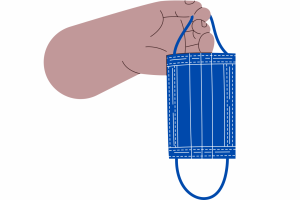Coronavirus disease (COVID-19) advice for the public: When and how to use masks
Coronavirus disease (COVID-19) advice for the public: When and how to use masks (WHO: last updated 19 June 2020)
Advice on the use of masks in the context of COVID-19
What is WHO’s view on masks?
Masks should be used as part of a comprehensive strategy of measures to suppress transmission and save lives; the use of a mask alone is not sufficient to provide an adequate level of protection against COVID-19. You should also maintain a minimum physical distance of at least 1 metre from others, frequently clean your hands and avoid touching your face and mask.
Medical masks can protect people wearing the mask from getting infected, as well as can prevent those who have symptoms from spreading them. WHO recommends the following groups use medical masks.
* Health workers
* Anyone with symptoms suggestive of COVID-19, including people with mild symptoms
* People caring for suspect or confirmed cases of COVID-19 outside of health facilities
Medical masks are also recommended for these at-risk people, when they are in areas of widespread transmission and they cannot guarantee a distance of at least 1 metre from others:
* People aged 60 or over
* People of any age with underlying health conditions
Non-medical, fabric masks are being used by many people in public areas, but there has been limited evidence on their effectiveness and WHO does not recommend their widespread use among the public for control of COVID-19. However, for areas of widespread transmission, with limited capacity for implementing control measures and especially in settings where physical distancing of at least 1 metre is not possible – such as on public transport, in shops or in other confined or crowded environments – WHO advises governments to encourage the general public to use non-medical fabric masks.



